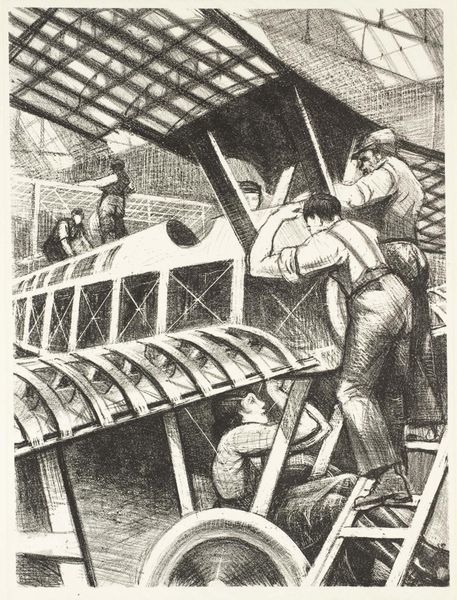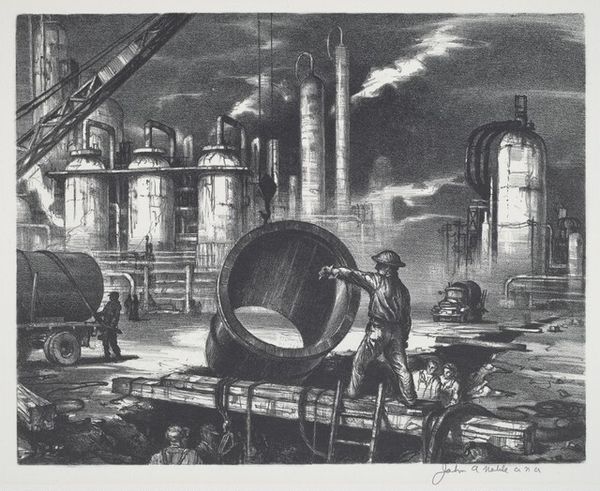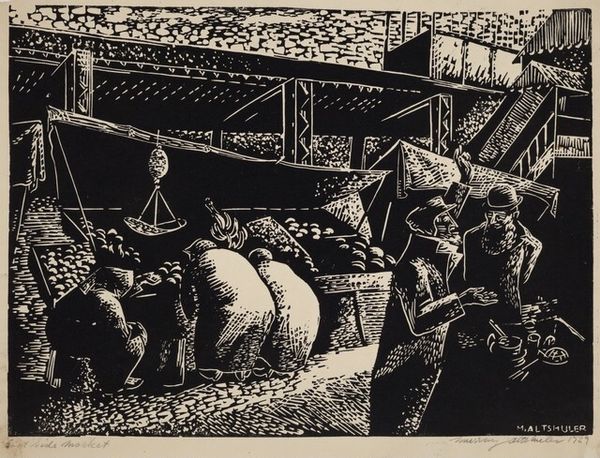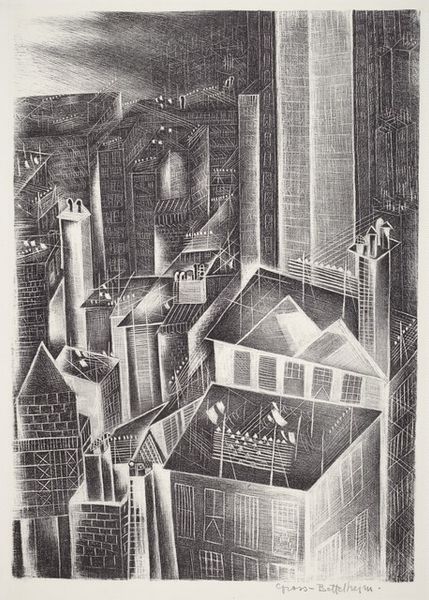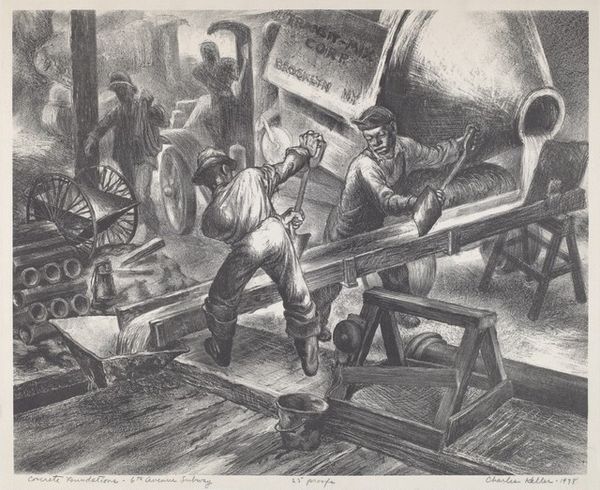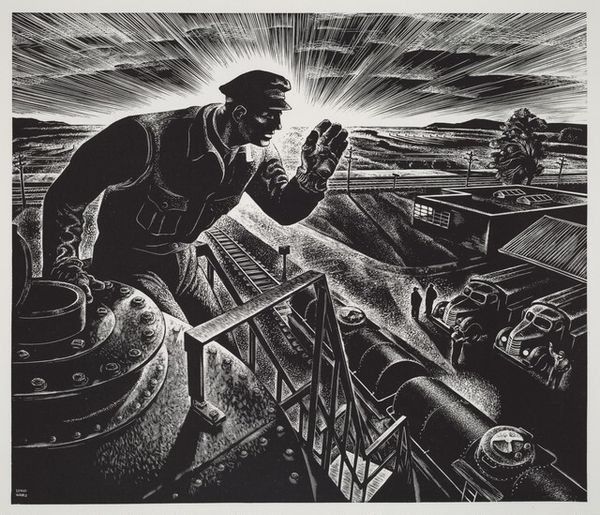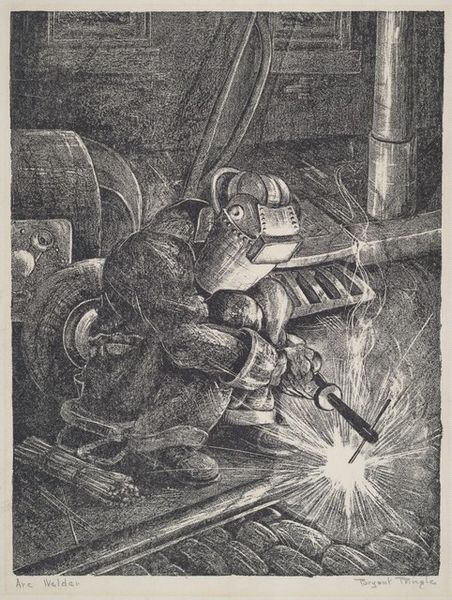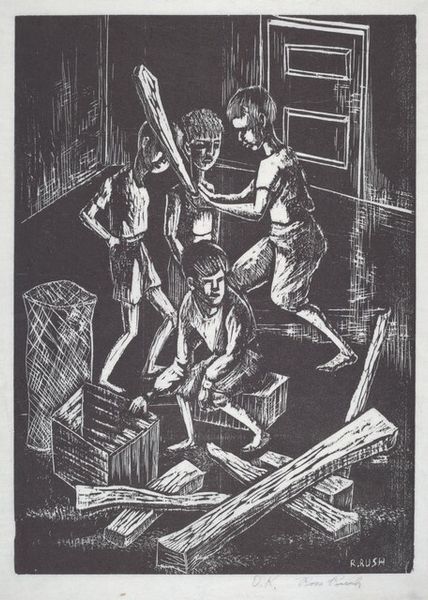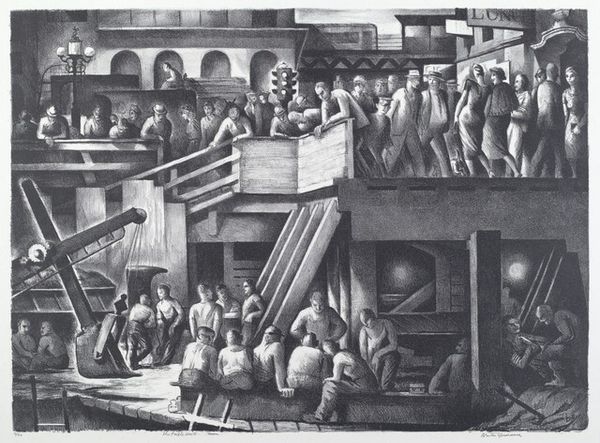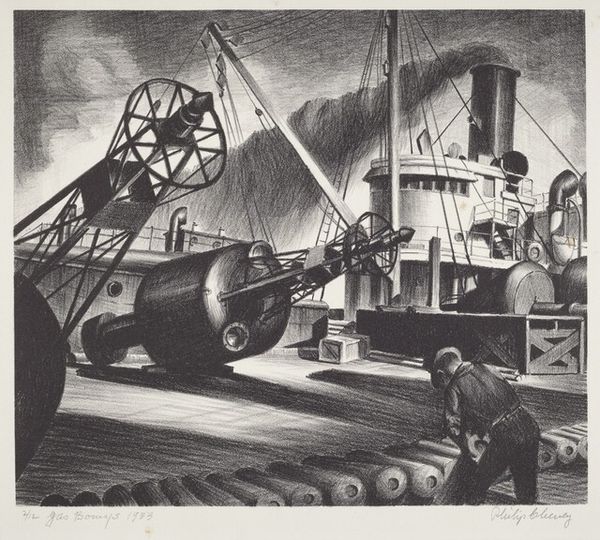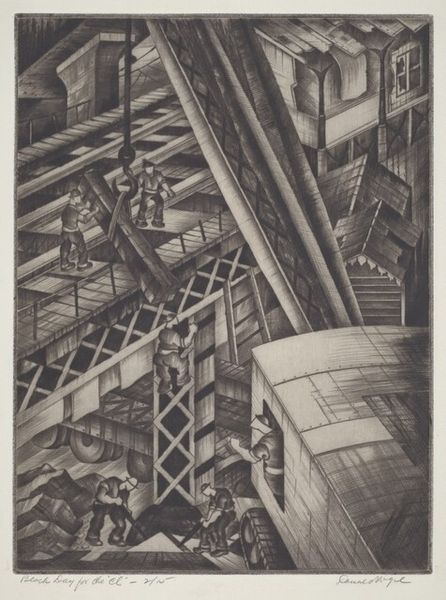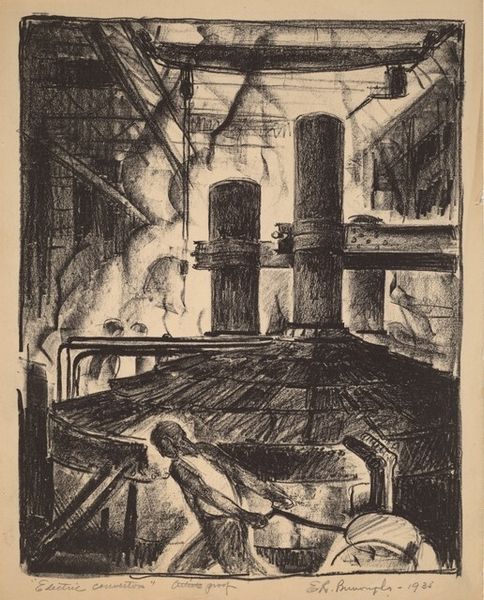
print, woodcut
# print
#
figuration
#
social-realism
#
woodcut
#
surrealism
#
line
#
genre-painting
#
realism
#
monochrome
Dimensions: image: 202 x 239 mm sheet: 273 x 318 mm
Copyright: National Gallery of Art: CC0 1.0
Curator: Looking at Lynd Kendall Ward's 1949 woodcut print, "Untitled (Refinery Interior II)," one is immediately struck by its almost overwhelming intensity. What is your first impression? Editor: The claustrophobia! I’m immediately struck by a palpable sense of confinement. The scale of the figures against the machinery amplifies the sense of industrial oppression, almost swallowing them whole. Curator: The artist has captured a feeling of anxiety and potential danger. Note how the monochromatic scheme emphasizes the stark contrast of light and shadow to add a psychological layer. What symbolic interpretation would you give to these harsh tones? Editor: Well, the lack of color, to me, underscores the dehumanizing conditions of labor. This wasn't just about physical exertion; it was about a systematic draining of life, where workers are almost spectral presences within the machinery. Curator: Ward's work is categorized as Social Realism, and we see strong influences of expressionism in its composition and strong use of lines to create dramatic contrasts. Editor: Absolutely. I see this as a visual manifesto about workers' rights, and I believe it fits firmly in the lineage of socially engaged art that critiques industrial capitalism's cost to human dignity. Ward's piece certainly speaks to contemporary concerns surrounding labor practices and economic exploitation. Curator: The refinery as a site has long represented humanity’s complicated dance with industry, echoing anxieties about dependence, power, and potential self-destruction. Looking closer, it mirrors classic alchemical symbolism. Do you see any of this? Editor: The alchemical idea is compelling! But also consider the sheer environmental devastation suggested by the industrial setting; those endless pipes could stand in for the veins of the earth, drained dry. This speaks to both human exploitation and planetary crisis, revealing our precarious relationship with finite resources. Curator: The artist seems to imbue everyday life and ordinary people with an aura of cultural memory. The visual effect reminds me that our past echoes within us. Editor: I see your point; that’s a reminder that what we inherit informs how we act. This art functions as both document and declaration, inviting continued activism and demanding justice for marginalized laborers. Curator: Considering Ward’s piece today, one is aware of the persistence of certain issues. Editor: Indeed! A potent piece. It reminds us that art serves as both a historical marker and a moral compass, urging us toward social and environmental responsibility.
Comments
No comments
Be the first to comment and join the conversation on the ultimate creative platform.

